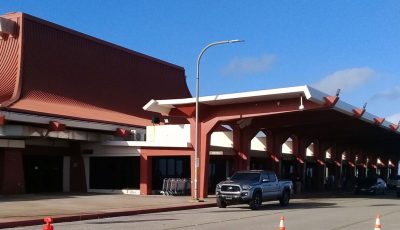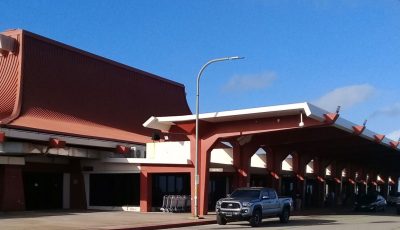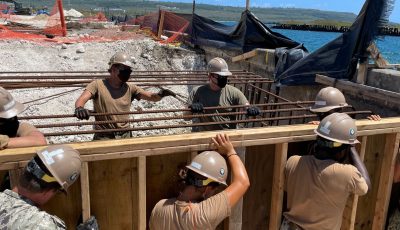AS PART OF DIVERT AND EXERCISE ACTIVITIES
Air Force plans to spend $375M to improve Tinian airport
The U.S Air Force disclosed it would be plunking down an estimated $375 million to improve the Tinian International Airport by building additional facilities and infrastructure.
The Air Force made this pronouncement during a public hearing last July 27 on its proposed Pacific Air Force Divert and Exercise Activities airport layout plan, according to Commonwealth Ports Authority Tinian board member Kimberly King-Hinds.
“The USAF presented a ballpark figure of which has been allocated for the project’s implementation. Much of this is for the construction of the project, which includes an apron, a hangar, [and] a fuel storage tank for their purposes. They will also be constructing a fuel pipeline, which will run from the seaport to the airport. So in terms of economic impact, the windfall will primarily be felt by those who are in the construction business,” she said in an email to Saipan Tribune.
King-Hinds, however, said the Air Force’s activities on Tinian would hopefully trickle down to the small businesses.
“Indirectly, Tinian will benefit from the additional people who will be on Tinian during the construction phase and during the training exercise who will be eating at restaurants, renting cars, hotel rooms, etc. This translates to an increase in collection of hotel occupancy taxes and BGRT [business gross revenue tax],” King-Hinds said
But the increased military activity may also have a negative effect, she pointed out.
“Given the limited number of hotel rooms on Tinian, there could also be a negative impact on tourism as it would be hard to invite visitors to the island when the Department of Defense fully occupies all the existing hotel rooms and have taken up all the rental cars. These factors give the community pause when considering whether this type of activity will actually benefit the island,” she added.
This is the first time that such a military project of this magnitude will be implemented in the CNMI particularly on Tinian.
King-Hinds said, “The Tinian leadership’s support of this proposed action has been based on the premise that it will improve the infrastructure at the Tinian airport, which would allow Tinian to welcome direct international flights and include fuel storage facilities and navigational aides that would benefit airline activities. They also thought that it would provide jobs for the community.”
She, however, said the Air Force has made it clear that the fuel storage facility is for military use only and navigational aides are also not included as this infrastructure is not included in their layout plan.
“The jobs that would come would be a result of the construction phase. These construction jobs are bid out to contractors who meet certain federal requirements for undertaking defense related contracts. Most of these contractors are from Guam who then sub-contract local contractors on Tinian. There will be other jobs after construction such as maintenance of the pipelines, etc. but that too will have to trickle down from these contractors who in large part will be coming out of Guam, as we’ve seen with other defense-related jobs on Tinian,” she added.
To date, CPA has not made a decision with regards to the PACAF Divert and Exercise Activities.
“CPA wanted to hear from the community of Tinian first, that is why we had the public hearing. CPA does not take this decision lightly. Ultimately, it is the people of Tinian who have to live with the impact of the proposed action. We plan to continuously engage with the governor and the people of Tinian through the Tinian leadership in deciding how to best move forward,” said King-Hinds.
Last month’s public hearing tackled issues such as what will be involved in the PACAF Divert and Exercise Activities and how it will affect the island and people of Tinian.
“The USAF presented their proposed plans about the Divert Training Exercises and Activities and their request for CPA’s approval of an airport layout that would allow them to move forward with implementing the construction of certain facilities at the Tinian airport to support the training activities.”
The Air Force plans to use the Tinian International Airport for military divert operations, humanitarian assistance staging, exercises, and other aircraft support activities. All operations will take place within a maximum of eight weeks per year of exercises at the Tinian International Airport.
Currently, there is no existing divert or contingency airfield on U.S. territory in the Western Pacific that is designed and designated to provide strategic operational and exercise capabilities for U.S. forces when needed and humanitarian assistance and disaster relief in times of natural or man-made disasters.



























